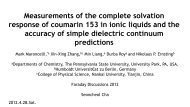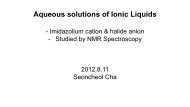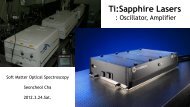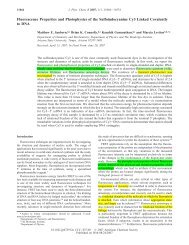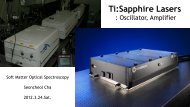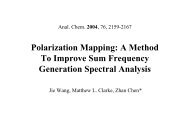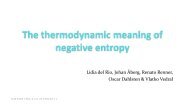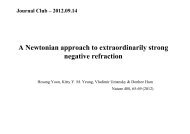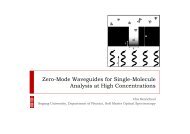Melting Behavior of Poly(L lactide)
Melting Behavior of Poly(L lactide)
Melting Behavior of Poly(L lactide)
Create successful ePaper yourself
Turn your PDF publications into a flip-book with our unique Google optimized e-Paper software.
To study the effect <strong>of</strong> T c on the melting process, using time- resolved FTIR<br />
spectroscopy.<br />
at T c = 100 °C,<br />
the I 1759 and I 1749 values have the very similar tendency<br />
<strong>of</strong> variation as those <strong>of</strong> PLLA118 crystallized at T c =<br />
80°C<br />
Figure 10. Temperature-dependent normalized<br />
intensity <strong>of</strong> the (a) 1759 and (b) 1749 cm-1 cm 1 bands<br />
for PLLA118 isothermally melt-crystallized at Tc = 100, 110, 120, and 140°C during the heating<br />
process at a rate <strong>of</strong> 2°C/min.<br />
indicating that the α΄- to α-crystalline phase transition<br />
occurs before melting.<br />
at Tc = 110 and 120 °C,<br />
the increase <strong>of</strong> I1759 disappears, but the increase <strong>of</strong><br />
I1749 is much weaker before the dominant melting.<br />
the α΄- to α-crystalline phase transition and<br />
the melting <strong>of</strong> the original α -form crystal.<br />
at Tc = 140 °C,<br />
no increase <strong>of</strong> the I1749 value before the<br />
melting is observed observed, and also the I 1749<br />
value decreases monotonously in the<br />
heating process<br />
direct melting <strong>of</strong> the α-form crystal.




